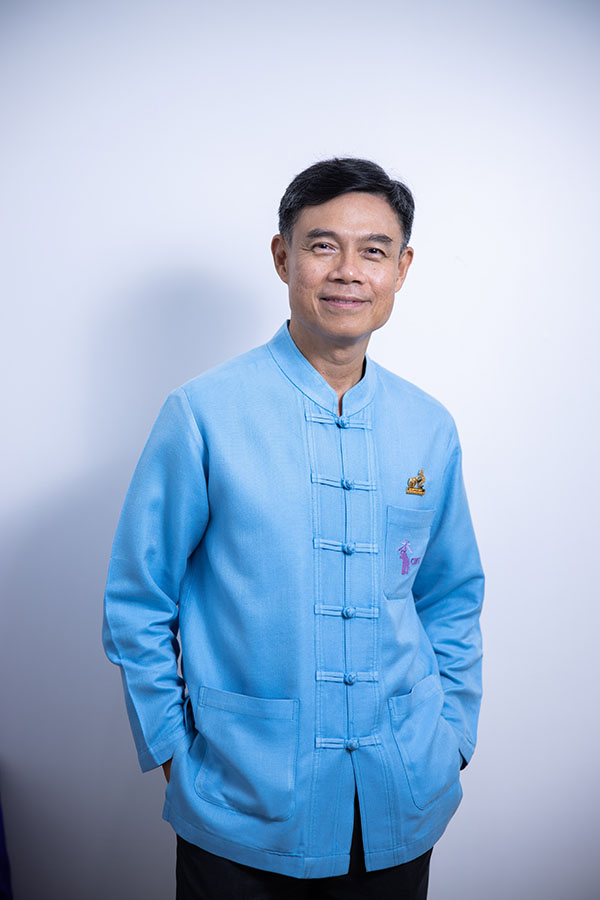Lamphun may be the smallest province in Northern Thailand, but it has great wealth in terms of historical and cultural richness; the city itself dating back more than thirteen centuries.
Lamphun also has the potential to become a key player in the Mekong Sub-region as part of the thriving economic quadrangle which includes cultural tourism, local knowledge and traditional ways of life, craftsmanship and weaving as well as the province's strong contribution to the agriculture sector with its famed longan farming while also being the home to over 900 large factories.
Only 35 kilometres from Chiang Mai city, Lamphun sits in prime position to absorb the growth of Chiang Mai, especially in areas of medical services. Chiang Mai, with its excellent infrastructure, has been slated to become the Chiang Mai Medical and Health Hub, with the aim of supporting the Thai medical and health tourism industry. Chiang Mai's terrain, culture and multiple disciplinary expertise in medicine and healthcare long accrued by Chiang Mai University's Faculty of Medicine is the reason why so many people with high spending power from around the world come to seek premium cure and care, which often ends in long residencies or tourism to other parts of the country.
In the coming years Chiang Mai will be home to a 450 bed Medical Hub which will be ready to provide high levels of medical services to patients with complex medical requirements. The centre will also train and produce medical professionals, researchers and public health personnel of the highest caliber. Once complete, this centre will elevate Chiang Mai as a medical destination on an international level.
Chiang Mai University's Faculty of Medicine also has the crucial responsibility of running North Thailand's largest and premier hospital - Maharaj Nakorn Hospital, colloquially known as Suan Dok Hospital. This government hospital provides medical services to Thailand's 17 northern provinces, as well as to many in need in neighbouring countries. Not only that, 250 doctors graduate from the faculty each year, many of whom expand on, and branch out from, their various fields of expertise. Combining their wealth of knowledge, expertise and experience, is why the Hariphunchai Medical Hub will be based in Sri Bua Ban Sub-district, Muang District, Lamphun.
Lamphun's Newest Hospital
Expanding on Opportunities to Help Patients
Sri Bua Ban Sub-district sits partly on the Mae Thi-Mae Teeb- Mae Saan National Conservation Forest which has, over the years, become a degraded forest land. In 1992 the Royal Forest Department granted Chiang Mai University the rights to put the land to use for the purposes of expanding its university's academic pursuits. The Hariphunchai Centre was born with the initial purpose of holding training and activity programmes as well as courses and research projects in a variety of fields.
With over 1,500 acres of land, just under five acres have been carved out for the Hariphunchai Centre, providing a prime position to become the newest hospital in Lamphun Province with the dual purpose of servicing medical needs of the people of Lamphun as well as being the centre for expansion of medical research and knowledge.
"President of Chiang Mai University Clinical Professor Niwes Nantachit, M.D, had a vision to utilise the land to benefit the people of Lamphun as well as to further benefit the education of medical students," explained Professor Pongruk Sribanditmongkol, M.D., Ph.D., Vice President of Chiang Mai University in charge of the project.
"With 228 beds, residents of Lamphun will be able to seek excellent standards of medical help right on their doorstep, while doctors will be able to work directly with the many experts and use all of the latest tools and technology provided at Suan Dok Hospital. The two hospitals will be closely connected, with specialised or specific care being provided in Chiang Mai, a short distance away, should a patient from the Hariphunchai Centre need additional support. This offers Lamphun's patients more opportunities to receive high level medical care at their own doorstep."

Professor Pongruk Sribanditmongkol, M.D., Ph.D. Vice President of Chiang Mai University
One other reason this centre was built in Lamphun follows research findings that the people of Lamphun enjoy a longer life expectancy with a large and growing active aging population whose health must be cared for so that they can age as actively and healthily as possible. It is therefore important to have in place a health system which provides for special ailments which many in the aged population face, from diabetes to heart and blood pressure problems.
Develop Medical Personnel
Skills To Meet the Needs of the public
In 2025 Thailand will reach the status of an aging society. This, combined with impacts from such universal challenges as global economic crises, means that the Thai medical industry needs to adjust itself to support the new needs which may emerge. Chiang Mai University is focusing its efforts to produce graduates to meet these demands from society by providing international standards of excellence to support societal changes. On one hand as ASEAN eases access across borders, the university's Faculty of Medicine will have to position itself to service this international market, on the other it cannot turn its back from specific local needs.
"We wish to train our medical professionals in a variety of fields," explained Professor Pongruk Sribanditmongkol, M.D., Ph.D., Vice President of Chiang Mai University. "Specifically, we wish to train our graduates to respond to local medical challenges. Hariphunchai Centre will provide the opportunity for them to experience first-hand unique challenges and cases which will be different from those of Chiang Mai's."
The Hariphunchai Centre, exquisitely designed in harmony with surrounding nature, will comprise 4 four-storey buildings which will be able to house over 220 beds. The centre, once complete, will support Chiang Mai University's vision of becoming a leading university committed to social responsibility and sustainable development.